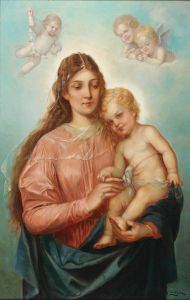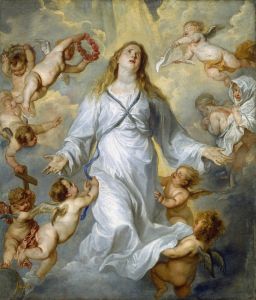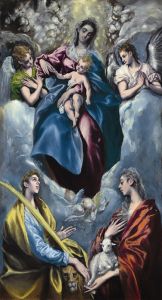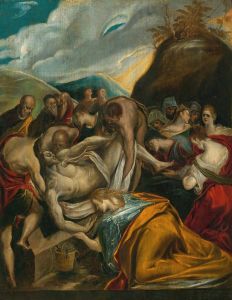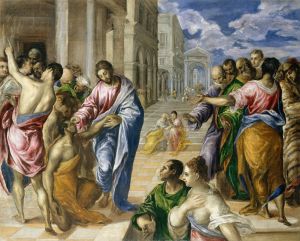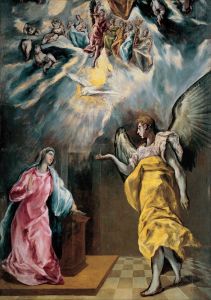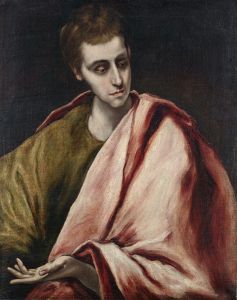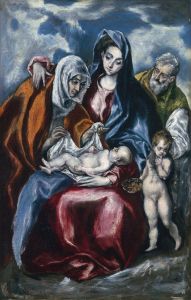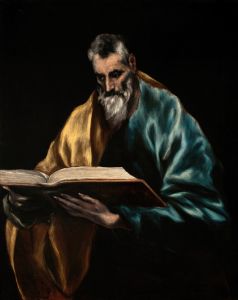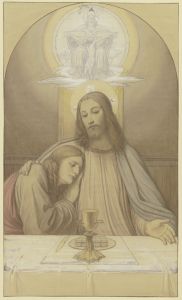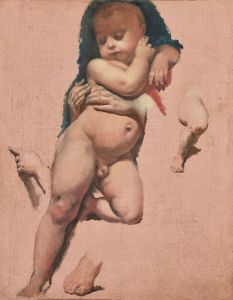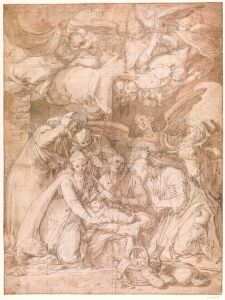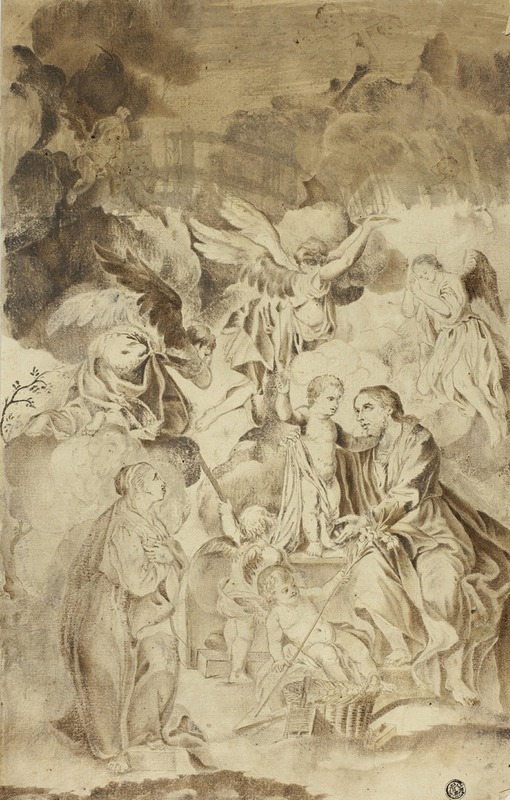
Beholding Vision of Christ Child and Saint Joseph
A hand-painted replica of El Greco (Domenikos Theotokopoulos)’s masterpiece Beholding Vision of Christ Child and Saint Joseph, meticulously crafted by professional artists to capture the true essence of the original. Each piece is created with museum-quality canvas and rare mineral pigments, carefully painted by experienced artists with delicate brushstrokes and rich, layered colors to perfectly recreate the texture of the original artwork. Unlike machine-printed reproductions, this hand-painted version brings the painting to life, infused with the artist’s emotions and skill in every stroke. Whether for personal collection or home decoration, it instantly elevates the artistic atmosphere of any space.
El Greco, born Domenikos Theotokopoulos in 1541 in Crete, was a prominent painter, sculptor, and architect of the Spanish Renaissance. He is best known for his distinctive style that combines elements of Byzantine tradition with Western painting techniques. One of his lesser-known works is "Beholding Vision of Christ Child and Saint Joseph," which reflects his unique artistic vision.
El Greco's work is characterized by elongated figures, dramatic use of color, and a strong sense of movement, all of which are evident in "Beholding Vision of Christ Child and Saint Joseph." This painting captures a moment of divine revelation, a theme that El Greco often explored in his religious works. The composition typically features Saint Joseph, the earthly father of Jesus, witnessing a vision of the Christ Child. This depiction aligns with El Greco's interest in spiritual themes and his ability to convey religious ecstasy and mysticism through art.
The painting is notable for its use of light and shadow, a technique El Greco mastered to create a sense of depth and drama. The figures are often set against a dark background, which enhances the luminosity of the Christ Child, symbolizing divine light. This contrast not only highlights the central figures but also imbues the scene with a sense of otherworldliness, a hallmark of El Greco's style.
El Greco's approach to religious subjects was deeply personal and innovative. He often deviated from the traditional iconography of his time, infusing his works with a sense of individuality and emotional intensity. In "Beholding Vision of Christ Child and Saint Joseph," this is evident in the expressive faces and gestures of the figures, which convey a profound sense of devotion and awe.
The painting also reflects El Greco's background and influences. Having been trained in the post-Byzantine tradition in Crete, he later moved to Venice and Rome, where he was exposed to the works of Titian, Tintoretto, and Michelangelo. These experiences enriched his style, allowing him to blend Byzantine and Western elements seamlessly. His eventual move to Spain further shaped his artistic development, as he became a key figure in the Spanish Renaissance.
While specific details about the provenance and current location of "Beholding Vision of Christ Child and Saint Joseph" are not widely documented, it is consistent with El Greco's oeuvre, which includes numerous religious paintings. His works are celebrated for their spiritual intensity and have been influential in the development of both Spanish art and the broader European artistic tradition.
El Greco's legacy is marked by his ability to transcend the artistic conventions of his time, creating works that continue to captivate audiences with their emotional depth and visionary quality. "Beholding Vision of Christ Child and Saint Joseph" exemplifies his mastery of religious themes and his distinctive style, which has earned him a lasting place in the history of art.





